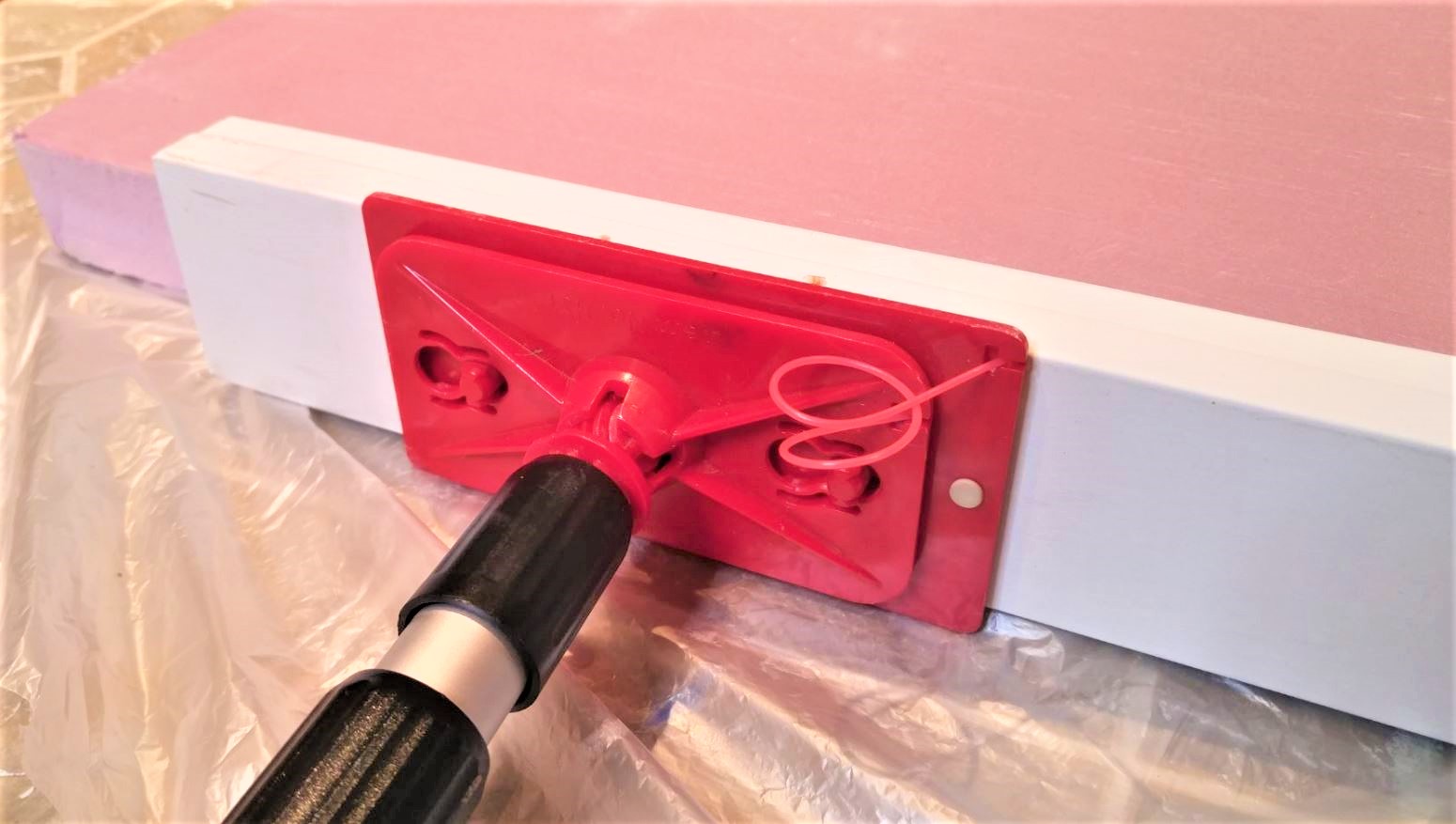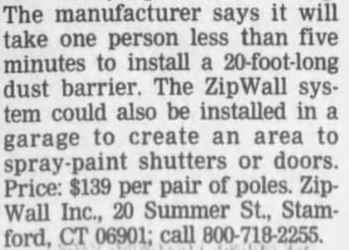Can ZipWall Make Remodeling Go Easier?

Early in my career writing about home remodeling, I received an e-mail from a marketing person at ZipWall or hired by them, asking if I wanted to have a free ZipWall system. I had just begun writing about home improvement and the idea that I could get products for free with the implied expectation that I would write about them was both novel and exhilarating.
It was 2006. ZipWall sent me a long cardboard box. Inside were two telescoping aluminum poles with red plastic spring-loaded ends. I used ZipWall for some projects, then wrote up a review in The Spruce (at that time called About.com), and I spoke favorably about ZipWall. In fact, I still write for The Spruce, and in looking at ZipWall literature I see that comments about ZipWall poles being aluminum is incorrect; they are stainless steel. I have changed that review accordingly.
I also see that ZipWall came out in 1999, a time so long ago that ZipWall was barely getting into that Internet thing (see first print clipping below). They had their first media blitz in 1999, with a second, much smaller media blitz-ette in 2003, and then the 2006 mini blitz-ette, which included me.

First the Obligatory Accolades
From the standpoint of easy renovation, ZipWall is king. If not king, it’s somewhere in the royal circle. I don’t even know what to say other than check out the Amazon review, filter out those pissy two- and one-star reviews, and read the top reviews. It’s all true.
If you can afford ZipWall (and it isn’t cheap) and you have just bought a home and want to remodel, buy the damn things. Price has actually gone down since 1999, beginning at $140 for a two-pole set and now going for about $90. A whole $1,285 ZipWall Tool Kit would be a wet dream, but really the two-pole set is all a DIYer needs.
Recommended ZipWall Changes
- Add arrows to the poles, indicating which direction to turn to release or secure.
- Add an attachment system so that the plastic sheet will stay on the end of the pole as you raise it.
- There is no place to grab the plastic plate. You have to either pry the plate off by inserting a thin object under the plate (not a good idea) or searching for some grab point on the bottom of that plate. ZipWall will say that the way to release the pole is to push up on the pole itself (ignoring the plate) and this is true in 95% of the applications. But there are the rare times you need to grab that plate and you just can’t.
How to Use ZipWall for Other Projects

ZipWall has really missed the boat on promoting this one. Like many ZipWall users, I use my poles for far more applications that have nothing to do with dust barriers.
- Above, I am using ZipWall as a push-clamp system to glue together two sheets of insulation foam.
- I have used ZipWall to hold drywall against ceiling joists.
- When building wire chases for rope lighting in my home movie theater, ZipWall poles were a friend I depended on for holding them up while I screwed them into place.
And those are only the first three that I can think of, on a brain that is ravaged by a poor sleep last night. With a clearer head, I’m sure I could come up with tons more.
Basically, I see a company that appears to not be taking advantage of the good thing they’ve got going. Promote it more. Clean up your dated website. Show how buyers use it for things other than holding up plastic. Do that Ryobi Nation type of thing, where users send in photos.
Yes, you’re pushing 20 years old. Congrats. But that’s no reason to keep your company running on fumes.
And as the saying goes, I wouldn’t say this if I didn’t love you, man.
Affiliate Relationships, Partnerships, or Sponsorships
In 2006, I received two ZipWall poles from ZipWall.